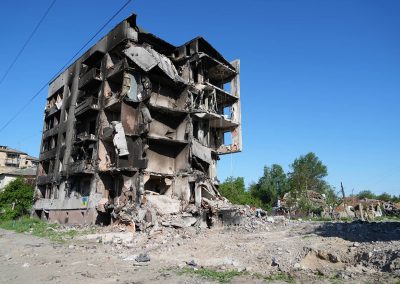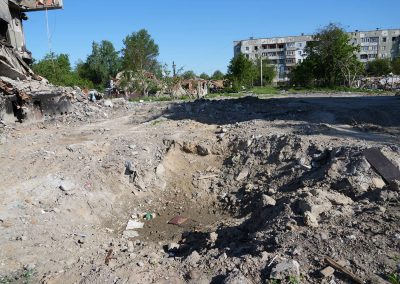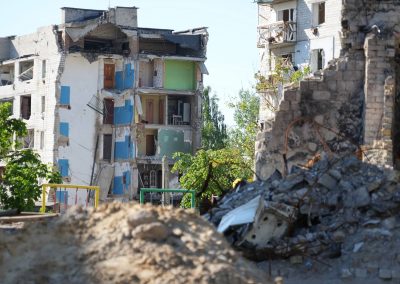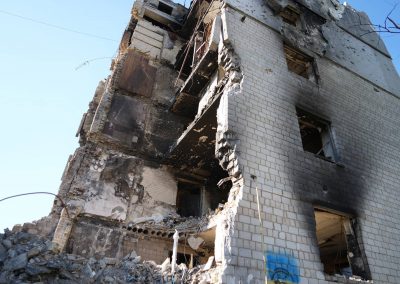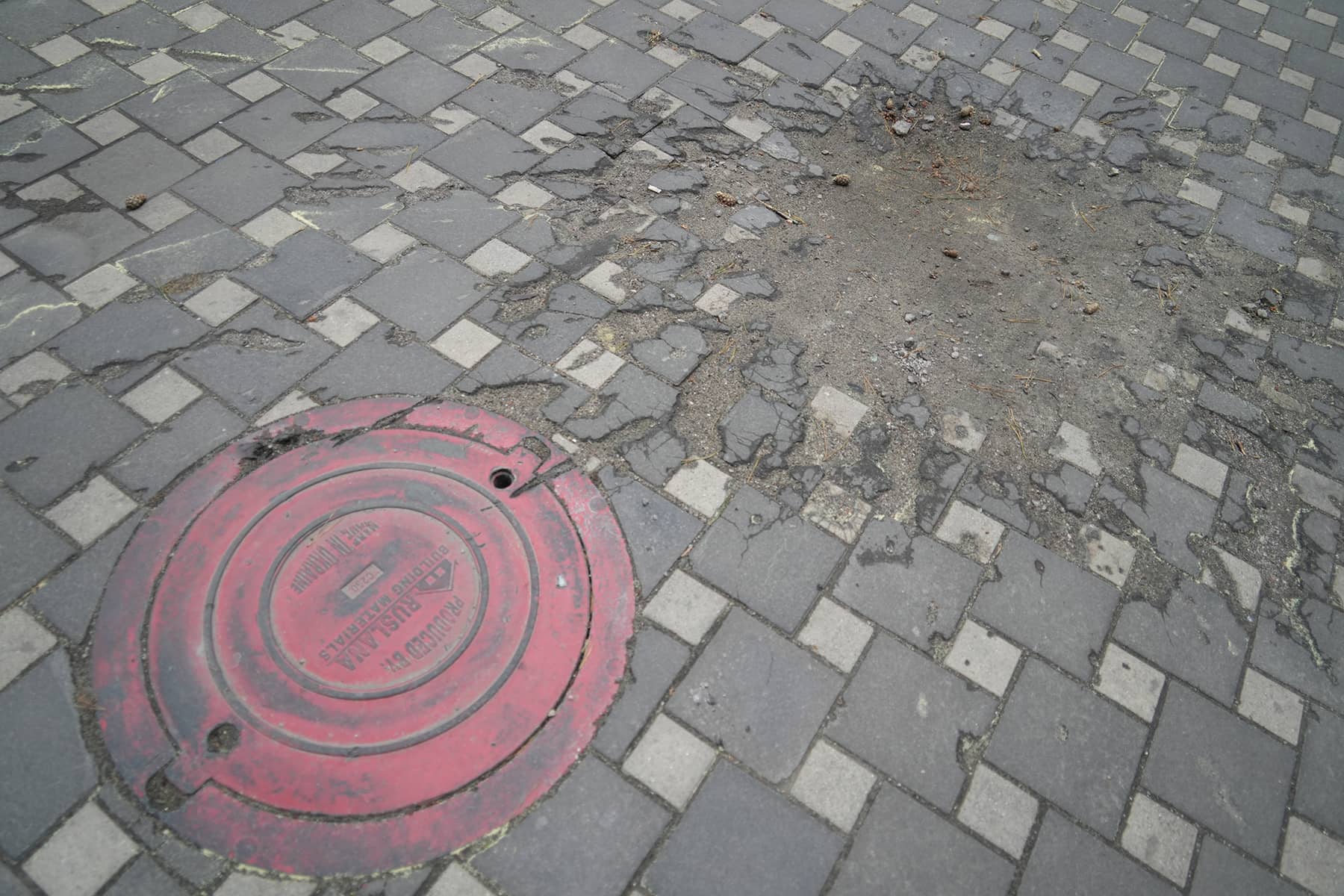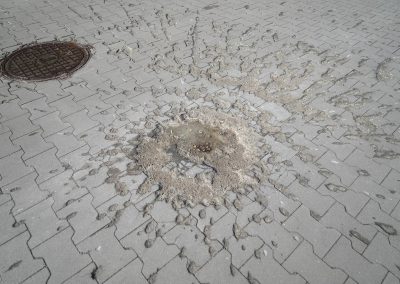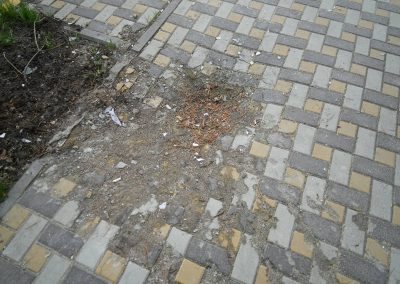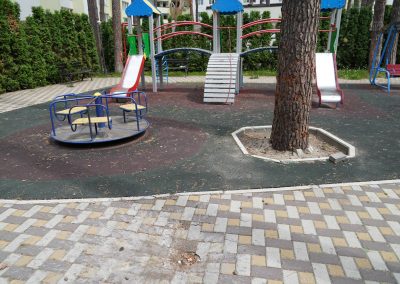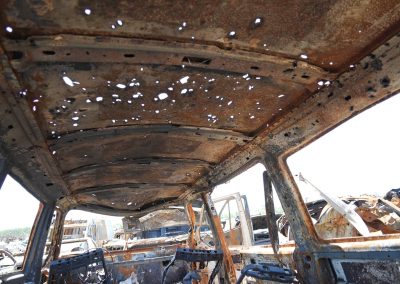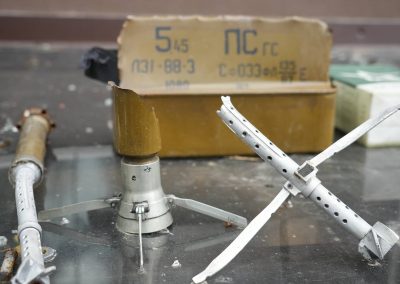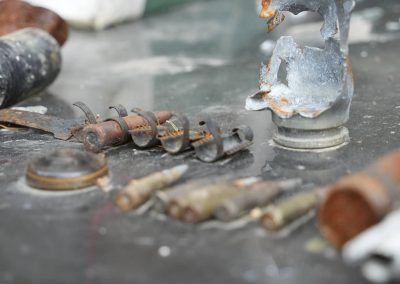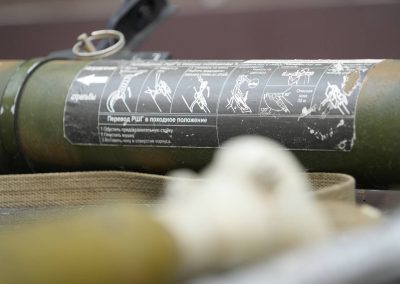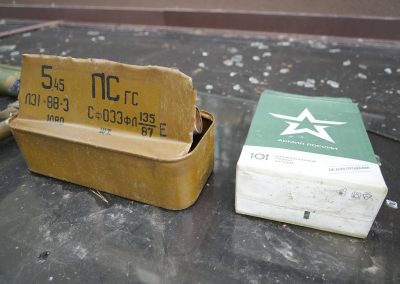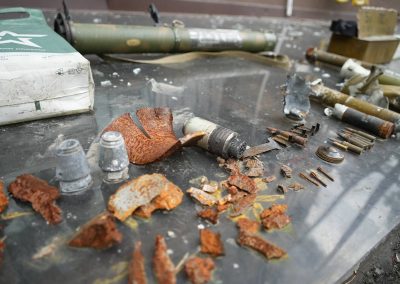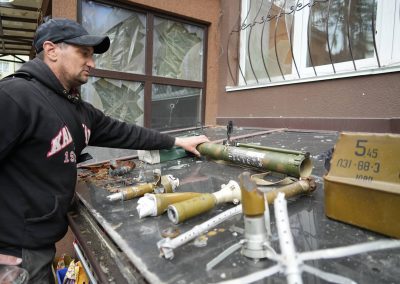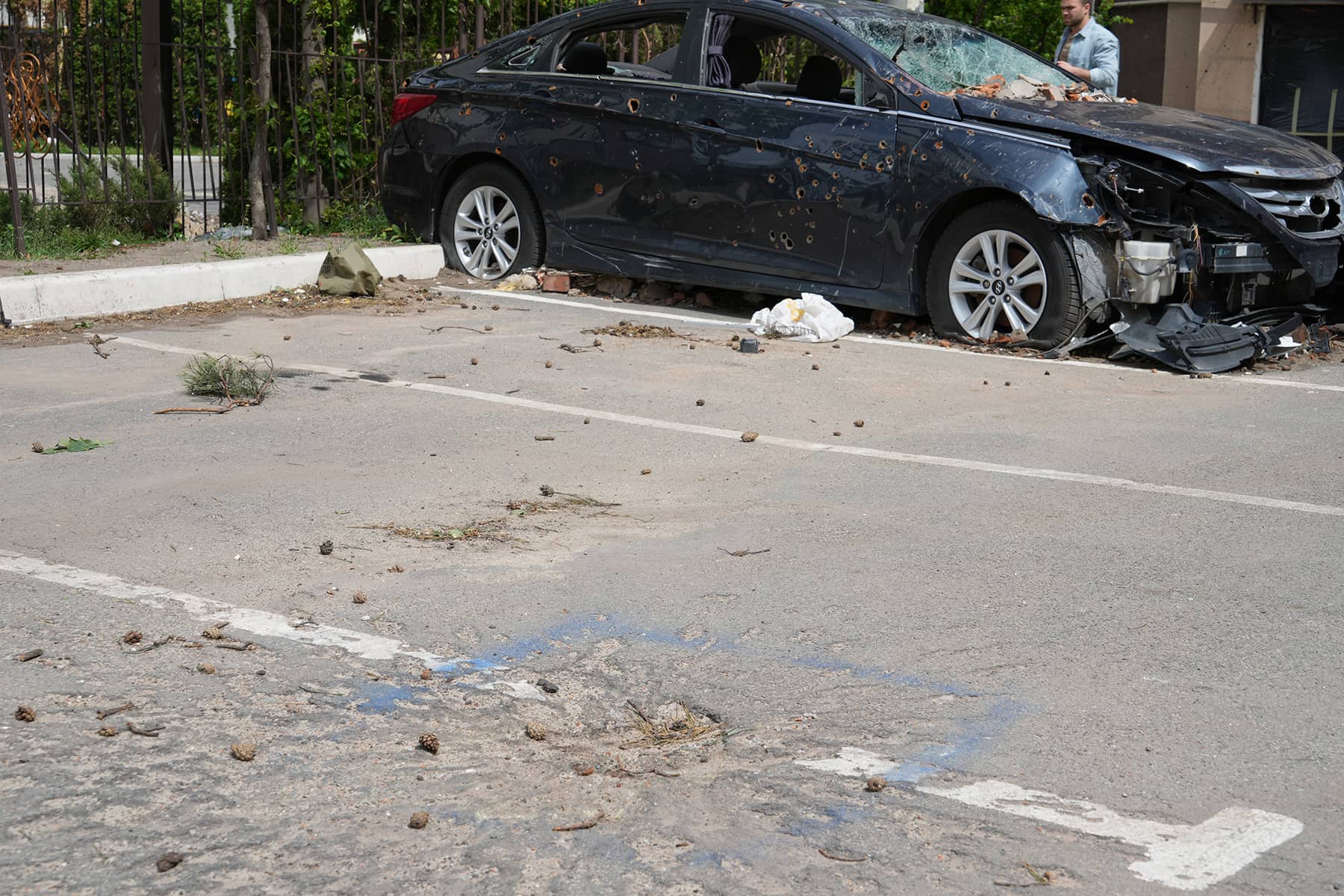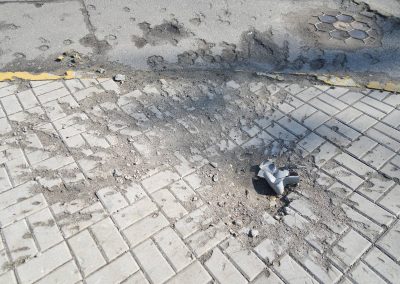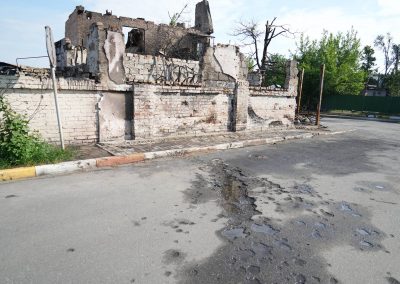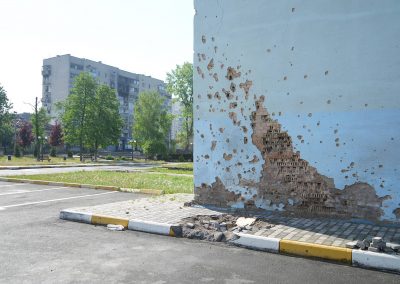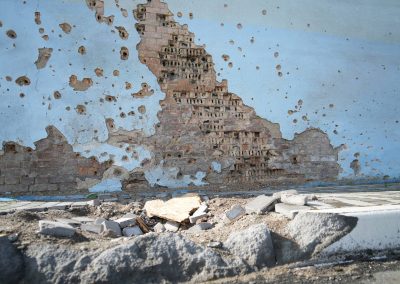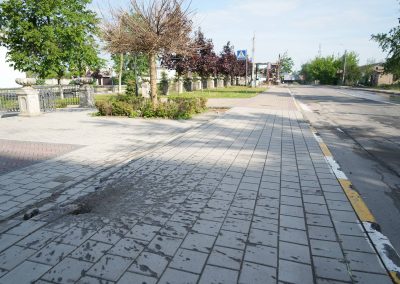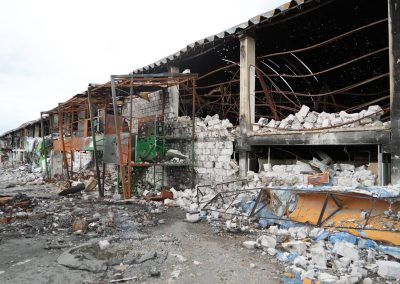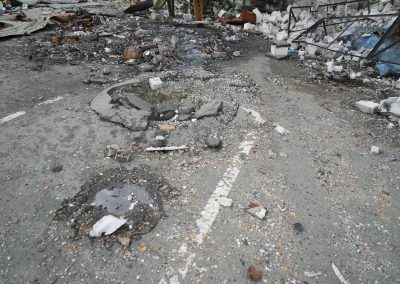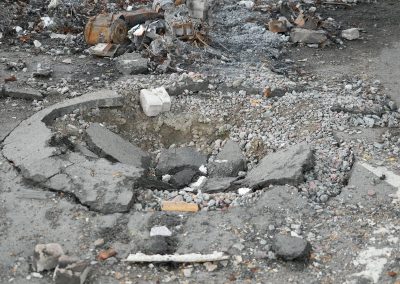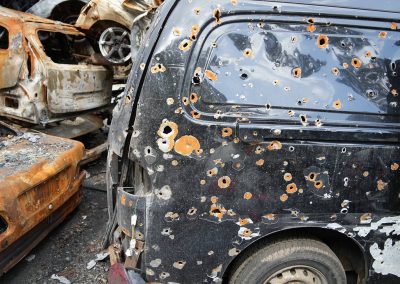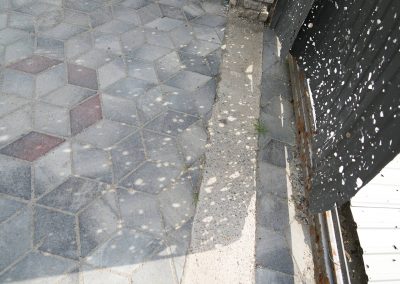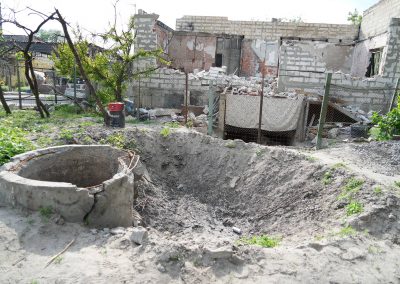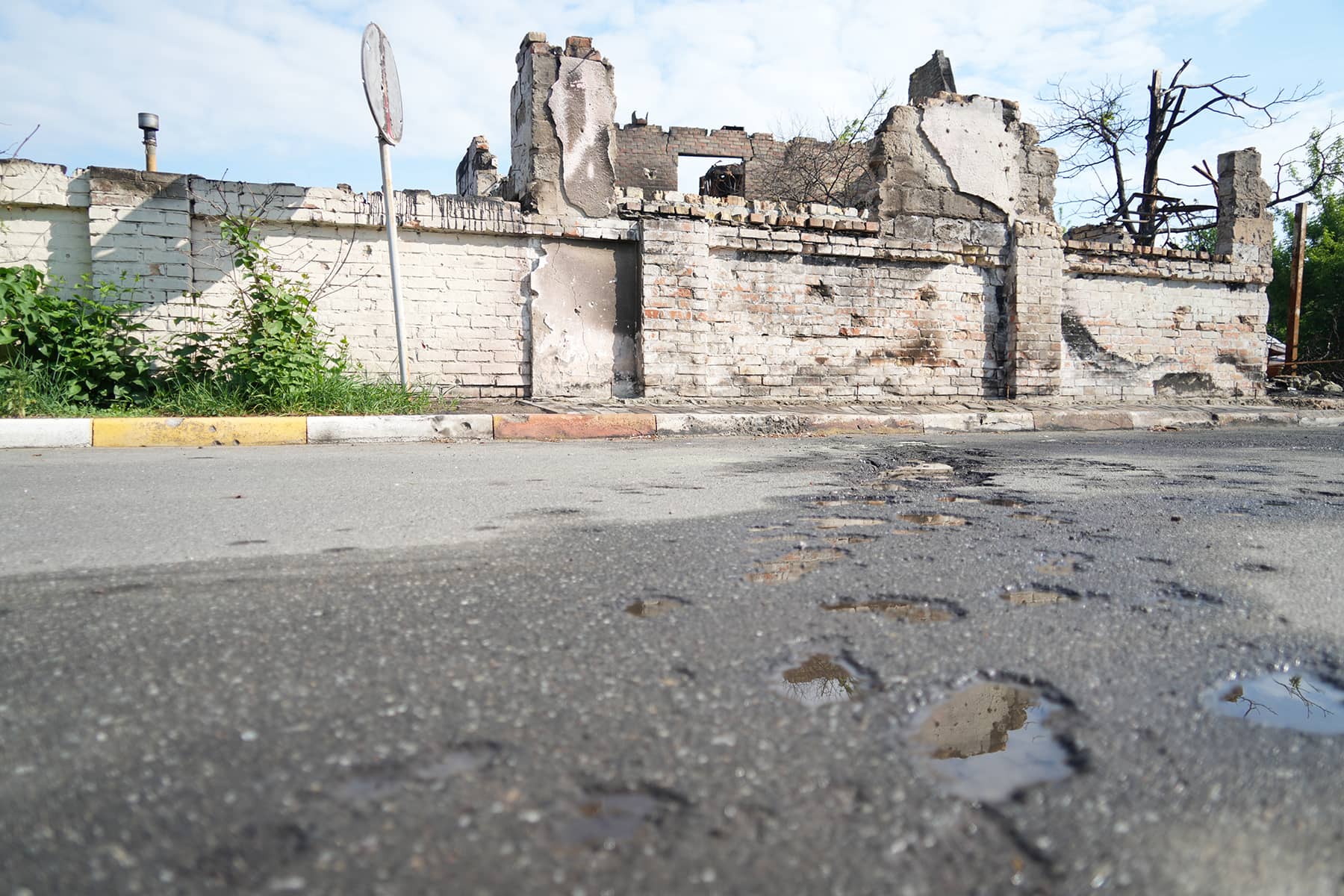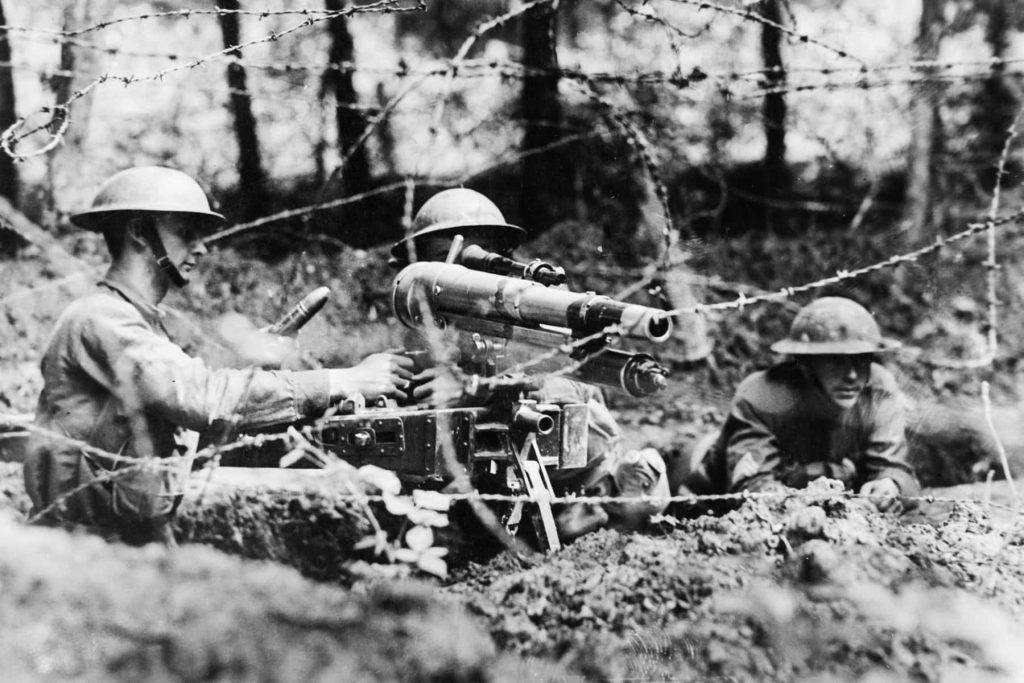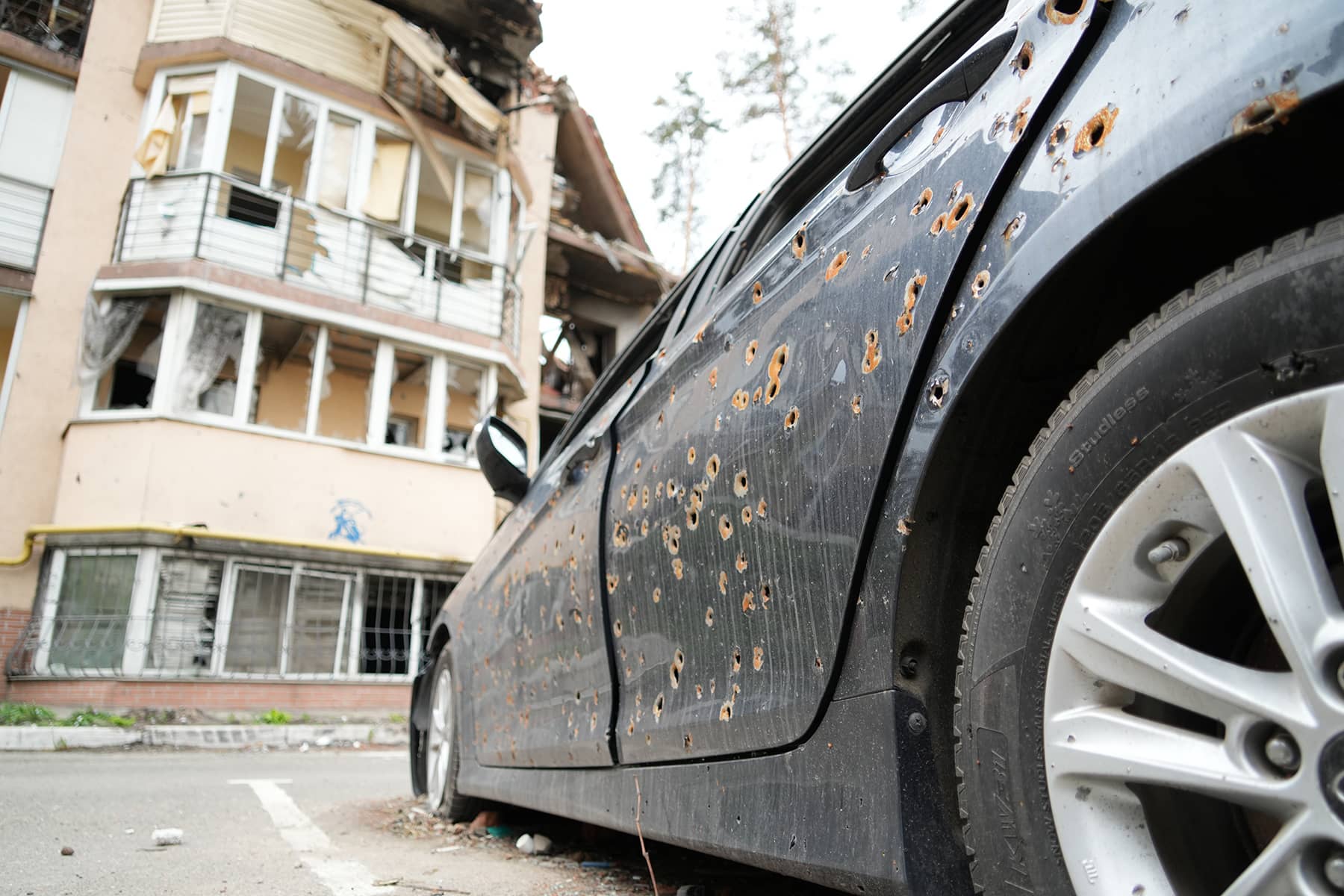
Evidence of Russian war crimes continues to surface daily in cities like Irpin, for weeks after Putin’s forces suffered its humiliating failure to seize the Ukrainian city of Kyiv in late March.
Since its liberation, residents in Irpin continue to find remnants of spent munitions among the rubble of destroyed home. But in most cases, the signature fingerprints of illegal weapons can be clearly seen by just walking down the street.
The team of journalists from Milwaukee Independent that traveled to Ukraine in late May to report on the ongoing war and recovery conditions in Irpin, Milwaukee’s sister city, were not forensic military experts. But it became quickly evident what kinds of Russian munitions were used, simply by looking at the footprints or characteristics of blasts.
In many cases, local residents combing through the ruins of homes in search of explosive boobytraps found spent munitions fragment. Evidence of cluster bombs and flechette only required a few minutes for even pedestrians to discover.
Many government and humanitarian organizations have spent weeks conducting extensive investigations into Russian war crimes. Much of the evidence collected were from sites visited by the Milwaukee Independent Team, including the unlawful air strikes on Borodyanka, and extrajudicial executions in the villages of Bucha and Zdvyzhivka.
The pattern of crimes committed by Russian forces centered on the targeting of civilians and usage of banned ammunition. While our investigation was limited compared to experts, we spoke with witnesses who gave first-hand accounts of surviving Russian attacks, and later collecting Russian ordinance after the Ukrainian counteroffensive pushed the invaders out of the country.
Those accounts matched numerous reports that Russians avoided engaging military targets, and instead terrorized the civilian population. They also identify historically recurring plans by the Russian military to commit genocide in Ukraine, as a strategy for conquering the independent nation.
“Attacks on hospitals and schools, employing “surrender or starve” sieges on civilians, the use of banned weapons such as cluster munitions, and strikes on populated areas using inaccurate weapons constitutes war crimes.” – Amnesty International
A war crime is a violation of the laws of war, a part of international law established by the Hague conventions of 1899 and 1907, and further defined by the Geneva conventions of 1949. The intentional killing of prisoners of war and civilians, torture, and the use of illegal weapons are forbidden.
Three types of illegal weapons were most commonly seen on casual inspection in conflict areas around Kyiv Oblast.
The most common and primitive bombs used by Russian forces were the FAB-250. Without precision guided technology, the “dumb” weapons are essentially in the class of World War II weaponry. They are released from bombers and allowed to free-fall in the area of a target. The inaccurate bombs were largely deployed by Russia in Syria to level the town of Aleppo. Almost a dozen buildings in towns north of Kyiv were destroyed by FAB-250 bombs, most notably in Borodyanka, Bucha, and Hostomel.
Evidence of Cluster Bombs, munitions that release dozens of smaller bombs has been documented in dead bodies of Ukrainian civilians. The signature explosive pattern of holes are visible in the wreckage of burnt cars, collected into junkyards in Irpin and Bucha. They can also be seen along streets, sidewalks, schools, and homes.
flechettes, French for “little arrows,” were first dropped during the Great War from biplanes, designed to attack infantry and penetrate their helmets. The weapons were not widely used during the World War II, but gained popularity by U.S. forces during the Vietnam War.
The weapons themselves are not prohibited by humanitarian law. However, the use of imprecise lethal explosives in densely populated civilian areas is a violation. On impact, the small darts bend into a hook and the razor-sharp fins often break away. The resulting damage can cause multiple wounds to a body, with fatal results.
Thousands of darts can be dispersed in one bomb across a blast radius of several hundred meters. Many of the nail-like projectiles seen by Milwaukee Independent team were removed from walls in destroyed apartments or scattered along the ground of schoolyards.
© PHOTO NOTE: All the original editorial images published here have been posted to the Facebook page of Milwaukee Independent. That collection of photos contains the MI copyright and watermark for attribution, and may be used for private social media sharing. Do not download and share images directly from this page. mkeind.com/facebook
Series: Reports from Ukraine
- Reports from Ukraine: Traveling from Milwaukee to a country at war just to take a vacation from America
- Images from Ukraine: Latino artist travels to Irpin to paint mural inspired by "Echoes of Guernica"
- Images from Ukraine: Irpin residents welcome reissue of Russian Warship Stamp as latest sign of victory
- Stories from Ukraine: Wandering in the ruins of a shattered life after surviving Russia's invasion
- Images from Ukraine: Similar to the Alamo, martyred cities bought precious time to save a nation
- Stories from Ukraine: Tent camp offers shelter for displaced residents until Irpin can rebuild lost homes
- Images from Ukraine: Graveyards of Russian war machines show the scale of Putin's failure to seize Kyiv
- Images from Ukraine: Following the invasion convoy's 40-mile route and exploring an abandoned base
- Stories from Ukraine: Illegal weapons and proof of Russian War Crimes easily seen along streets of Irpin
- Images from Ukraine: How Irpin’s cemetery processed the staggering massacre of its local citizens
- Stories from Ukraine: Healing remains slow as Borodyanka residents recover from occupation
- Images from Ukraine: The deep scars of war remain visibly etched across the landscape of Borodyanka
- Interview with Oleksandr Markushin: Mayor of Irpin and the hero of a Hero City
- A Meeting of Sister Cities: Former and current Mayors of Irpin ask Milwaukee's business community for help
- Stories from Ukraine: Having a shared purpose helped Irpin's leaders protect the city and stop the invaders
- Stories from Ukraine: How Milwaukee helped a bakery feed hungry survivors in Bucha with fresh bread
- Stories from Ukraine: Bucha resident recalls how Russians turned neighborhood into a street of death
- Stories from Ukraine: How a mass grave of executions overshadowed accountability from Bucha’s leadership
- Images from Ukraine: Putin’s attack on Babyn Yar is a painful reminder of the broken vow of “Never Again”
- Images from Ukraine: An unexpected encounter with Jewish history and the bloody legacy of persecution
- Images from Ukraine: Listening to timeless voices of ethnic heritage etched in stone at Lychakiv Cemetery
- Images from Ukraine: The experience of attending a military funeral in Kyiv while children died in Uvalde
- Images from Ukraine: Stepping out of the fog of war to see the beauty of faith in ancient places of worship
- Images from Ukraine: The cities of Kyiv and Lviv were divided by history but remain united in identity
- Stories from Ukraine: Anya Nakonechna shares why the Lviv Opera is a symbol of her nation’s culture
- Images from Ukraine: A folk village where visitors can experience the life of past generations
- Images from Ukraine: Signs of renewal sprout from under Irpin’s rubble as city looks to the future
Lее Mаtz
Lее Mаtz
Milwaukee Independent editorial team for this special series: (UKRAINE) Lee Matz, photojournalist; Oleh Pinta, translator / reporter; Yaroslav Zdyrko, security / videographer; (MILWAUKEE) Halyna Salapata, logistics / translations.
Milwaukee Independent has reported on the situation in Ukraine since it was invaded on February 24. Coverage originally began with reactions and rallies from the local Ukrainian American community, and relationships with Milwaukee’s sister city of Irpin. Through partnerships and good journalism, sources were developed that enabled Milwaukee Independent to publish developments about the unprovoked war in realtime. In late May, a team from Milwaukee Independent spent nearly two weeks on the ground in Ukraine. The award-winning daily news magazine was the first and, at the time, only media organization to send staff into the country since the war began.
Reports from Ukraine: An extensive news series by Milwaukee Independent from a country at war

